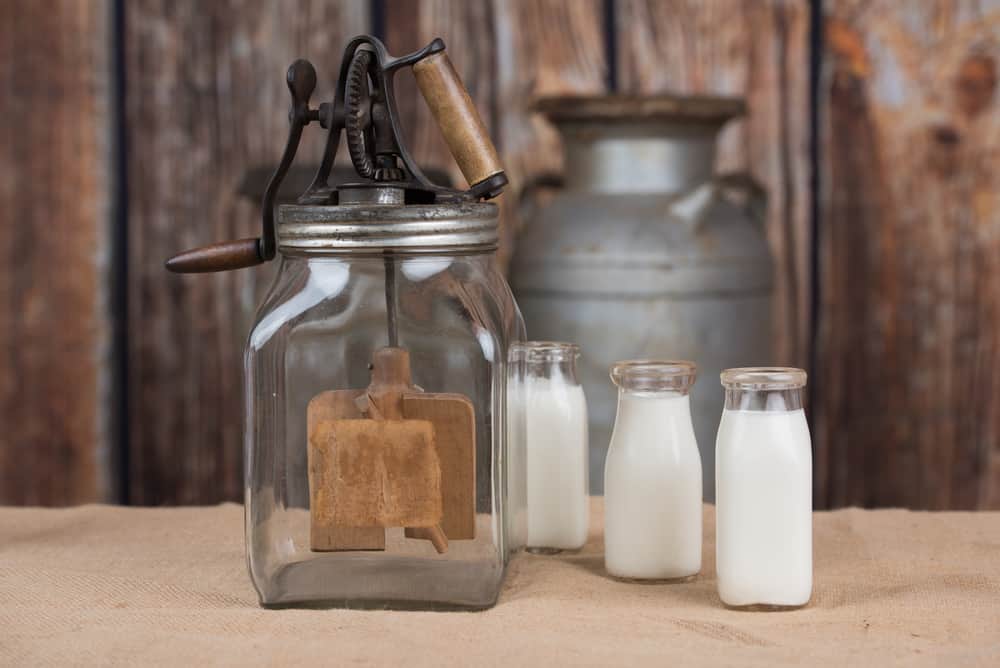Some inventions become completely obsolete over time as new technologies replace them. Others evolve and change, often to the point of having no resemblance to what came first.
However, some seem to stand the test of time, with some contemporary designs having an uncanny resemblance to their antique origins.
Such is the case with the butter churn.
Butter making is a staple of human culture, and the butter churn is perhaps the quintessential antique representative of the long and rich history of dairy consumption.
The value of an antique butter churn could surprise you as they continue to be sought-after collector’s items.
Today, we’ll look at antique butter churns, their evolutions and varieties, how to spot one, and what value to expect.
Table of Contents
What is a butter churn, and how does it work?
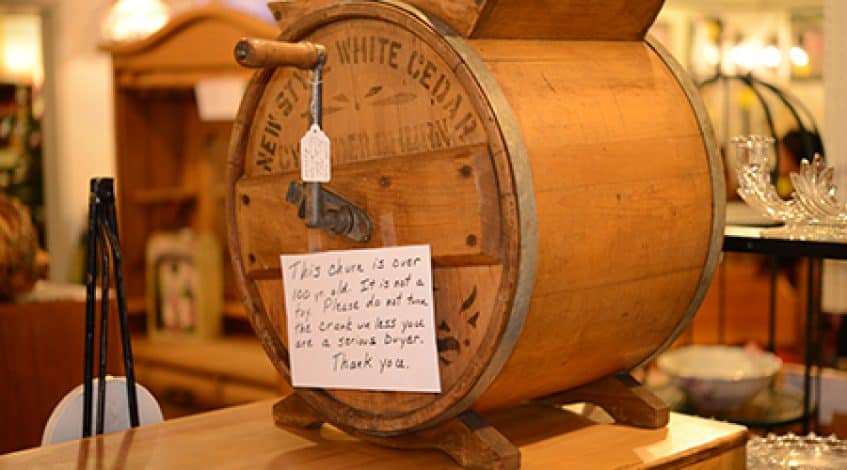
The word ‘churn’ both refers to the container you make butter in and the act of butter making itself.
Though their sizes, mechanisms, and materials have changed, the essence of the butter churn has remained the same for thousands of years.
All butter churns—antique or not—will have a vessel in which to hold the cream (which is what will turn into butter) along with a handle, crank, pole, or another type of ‘stick’ to facilitate the movement or churn.
Consistently agitating the cream will slowly separate the oily yellow fat from the watery buttermilk and eventually clump up to make butter.
How long does it take to make butter the old-fashioned way?
Quick answer: roughly 30 minutes.
In reality: it depends.
The precise time it would take to use an antique butter churn would depend on the size of the churn, materials, and quantity of cream.
As a rule of thumb, the smaller the churn and sturdier the materials, the faster you can churn cream into butter in your kitchens.
It bears mentioning that some technique is required, mainly in agitating the cream at a consistent pace. Failure to get this right can be frustrating and even painful.
Sugars and sweeteners can also significantly delay or stunt the process and have you churning cream until the cows come home!
To better understand how an old-fashioned churn works, check out this video of a 100-year-old Dazey churn in action.
When was the butter churn invented?
Nobody knows.
There is speculation amongst some historians that nomadic peoples would throw camel milk into a sac of goatskin, tie it to a rope, and churn butter through the slow gyrations of constant movement.
The earliest actual evidence of antique butter churns is this wooden churn lid found in Scotland dating back to the 6th century.
Regardless of who invented it, early humans used it to churn butter in the most rudimentary ways thousands of years ago, and it’s still being used with the same essential function today.
It’s no wonder why antique butter churns continue to have a special allure for many collectors and aficionados of dairy history.
How can you tell if a butter churn is an antique?
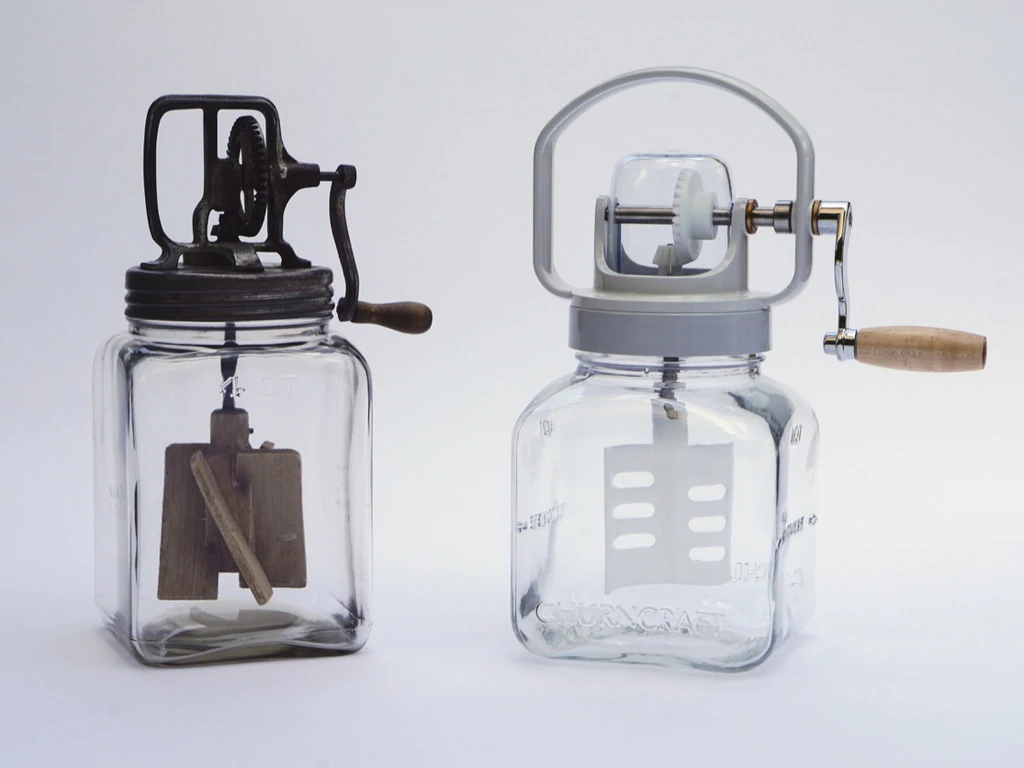
In many cases, you can tell just by looking at it, with some considerations.
Unlike most vintage items, butter churns from the early 20th century onward haven’t changed a lot, with some designs made a hundred years apart looking virtually identical.
For this reason, churns made of tin, metal, wood, or stone with an apparent patina of age are likely to be antiques, or at least vintage, thus garnering some value.
Of course, always do your due diligence.
Remember these basics when trying to figure out if a butter churn is an antique:
Condition
The condition of any old item will always provide clues as to whether it’s an antique. While many take great care to preserve the condition of valuable pieces, some cracks and chips will inevitably occur over time, especially for older pieces.
Materials
Antique butter churns were made of glass, stoneware, wood, or cast iron. Scrutinizing each material can also provide clues about the period and value of the piece.
Age
You can’t discuss antiques without age, and butter churns are no different. One way to find a butter churn’s age is by looking for the patent number on the bottom. If there is one, you’re in luck.
Patent numbers are one of the most accurate ways to determine the age of old butter churns since the US Patent and Trademark Office records all patents and their issue dates.
Manufacturer
The final way to distinguish an antique butter churn is through the identifying stamps or marks left by the manufacturer. Not only can these help narrow the age (and thus rarity) of an antique, particular butter churns from manufacturers like Red Wing Pottery can be pretty valuable.
There are thousands of identification marks on different antique items. Learn more about antique identification marks through this comprehensive guide.
What are types of antique butter churn?
Antique butter churns fall into three broad categories:
Dash churns
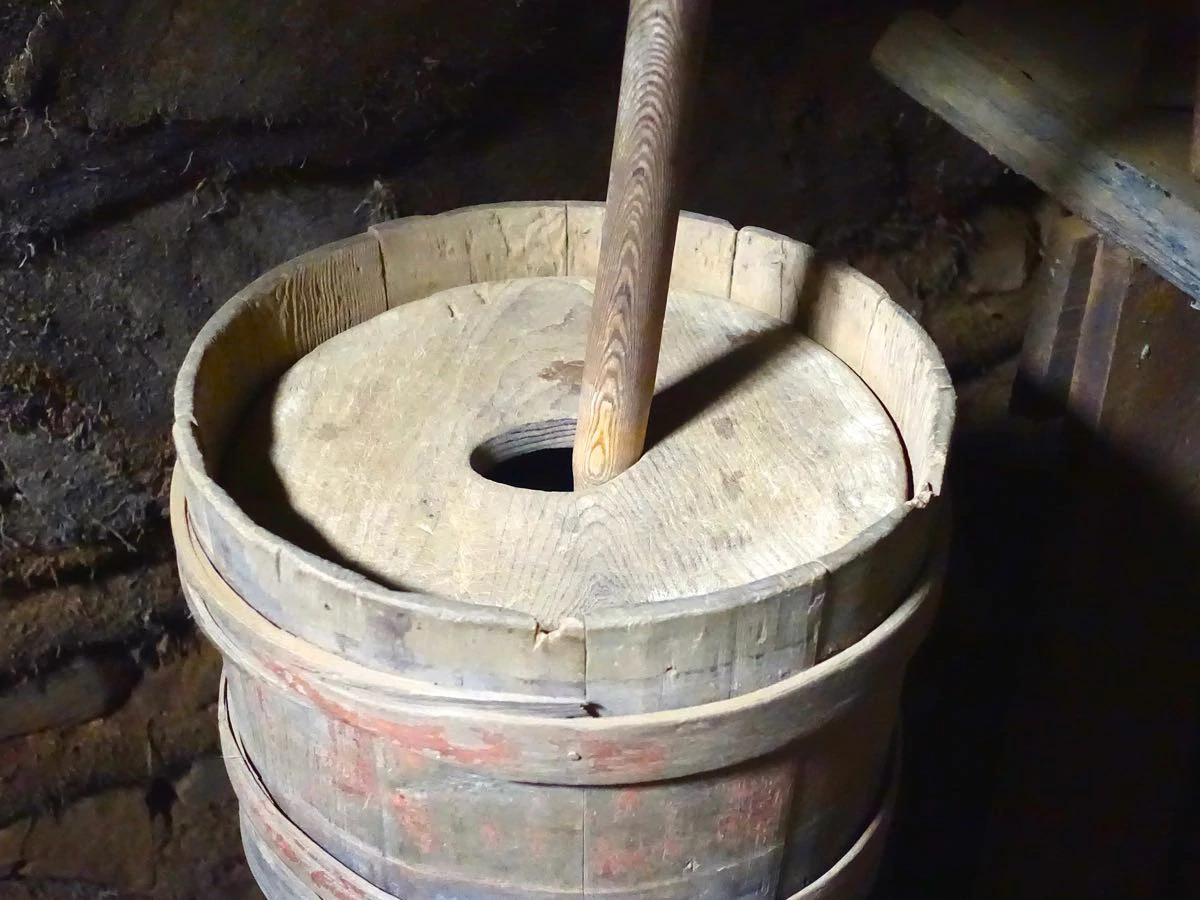
Also known as the ‘plunge churn’ and the oldest of the bunch, dash churns were used throughout the middle ages and were the most common tool for making butter until the industrial revolution.
A dasher—a wooden plunger perforated or attached to a circle or cross—would move in a vertical motion inside a butter churn crock or container to make butter.
Wooden dash churns in excellent condition are difficult to find, but one with its original paint and other unique characteristics can be worth around $300 – $500.
Antique stoneware butter churns can be even more valuable.
Features to look out for are any decoration—usually a cobalt blue pattern and salt glaze—and whether the crock still has its original lid.
These can go for as much as $685 on eBay in good condition. Rare pieces will push the price even further up.
Barrel churns
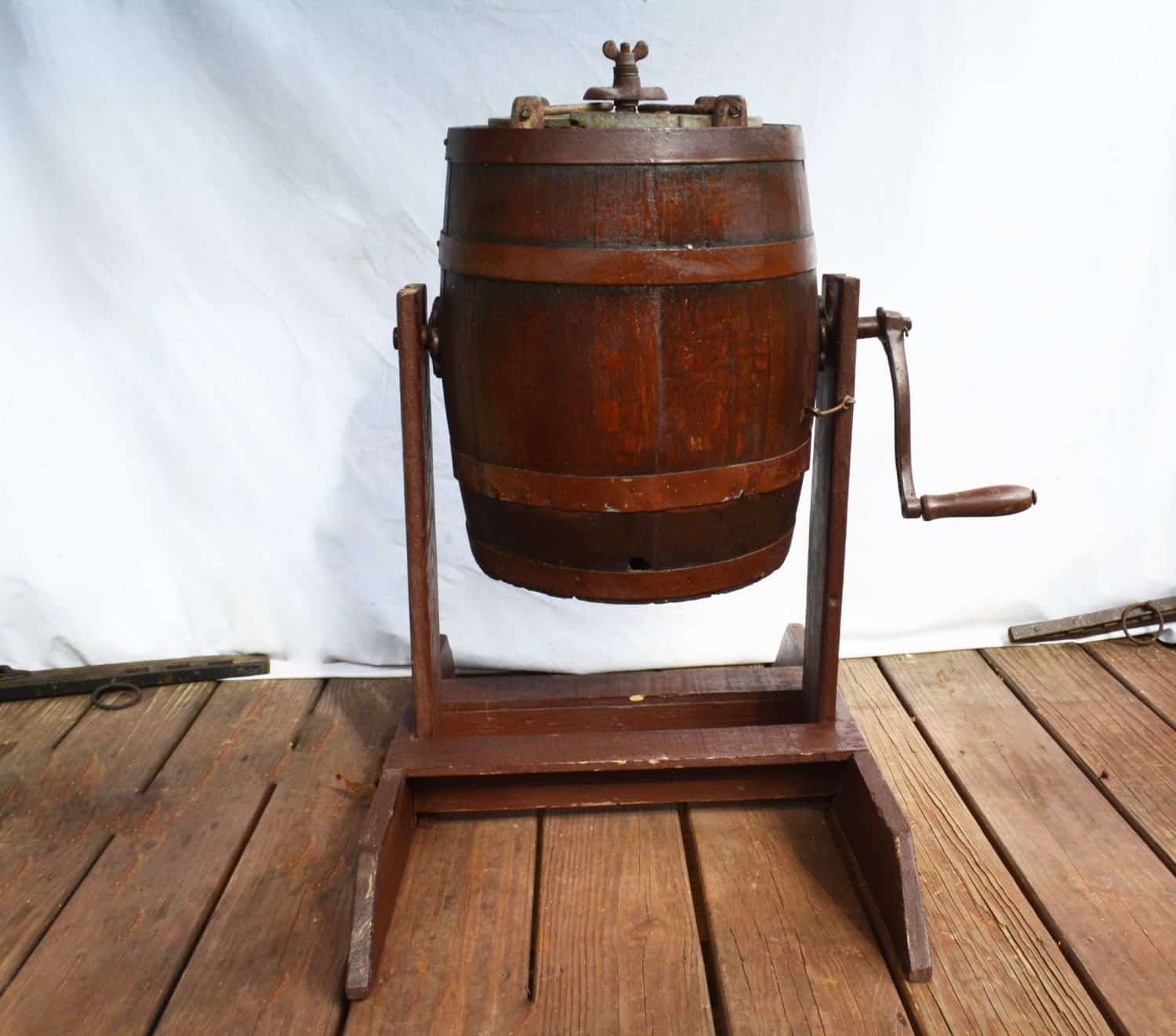
Barrel churns came next. They stood on wooden legs attached to a hand crank or wooden handle, which rotated the entire barrel.
Some of the most valuable antique wooden butter churns used barrels and often stood on legs. Barrel churns have various designs, with some using a crank to make butter while others simply rocked the barrel back and forth.
In good condition, an antique barrel churn can easily be worth over $1000 as you can see from these two examples.
Paddle churns
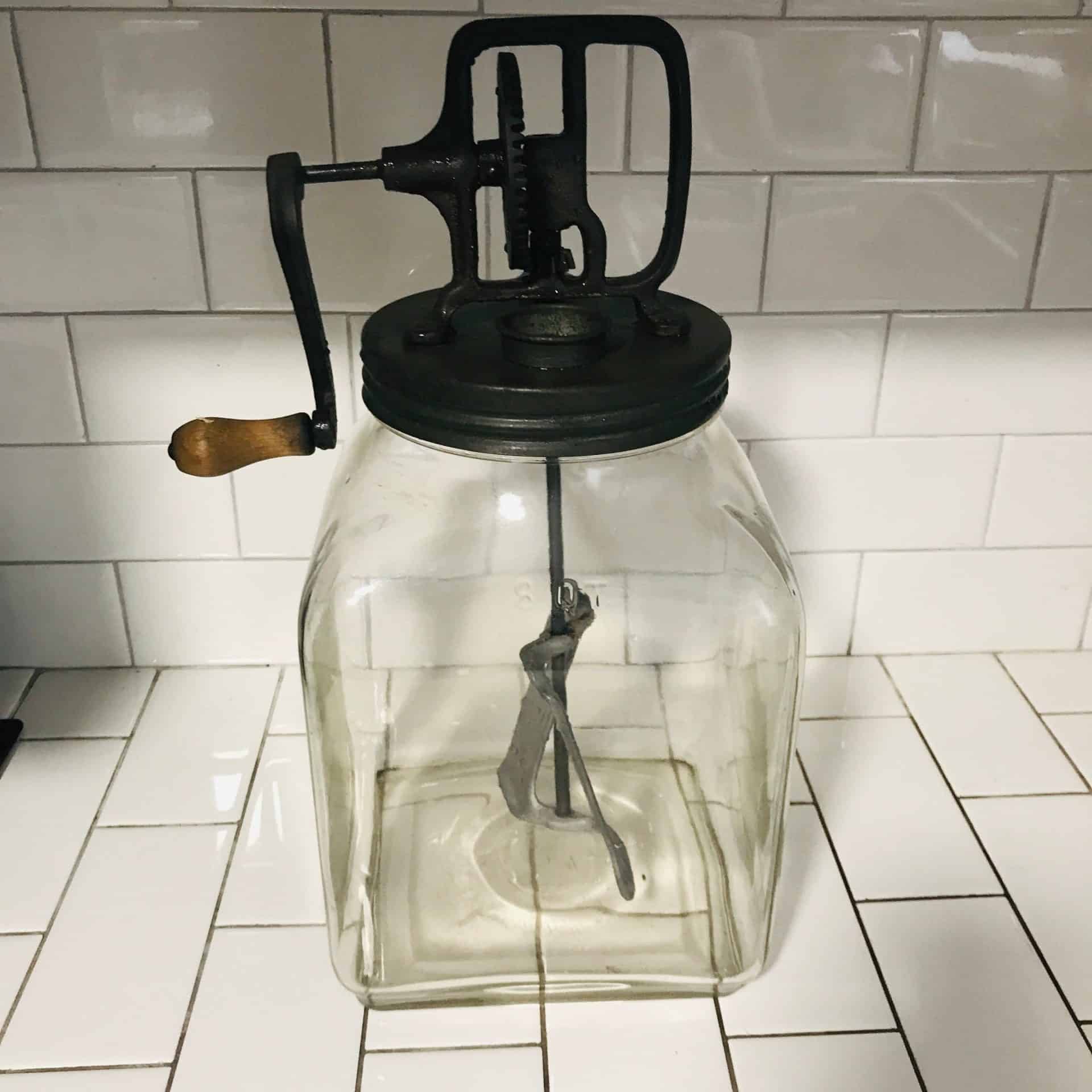
The final type of antique butter churn is one still being used today. The paddle churn was smaller and more efficient, replacing most barrel churns in domestic households by the late 19th century.
Paddle churns had wooden and metal boxes or stoneware crocks with a rod attached to a rotating paddle inside.
Older versions of paddle churns had different styles and were made of tin or metal; in good condition, you can expect to pay around $200 for one of these.
Soon after, a square or shouldered glass jar became the standard vessel, with companies like Imperial and Dazey having made many glass churns that would still garner around $500 today.
Many people still buy Dazey churns not as only antiques but to churn butter!
You can find them in antique stores and flea markets all over Europe and United States, and some can be as cheap as $50.
Slightly more iconic styles like this vintage butter churn from Dazey can run about $150.
Final thoughts
Antiques are beautiful and sentimental—romantic even.
But they’re also about the past, knowing where we came from, and preserving culture.
Antique butter churns are a testament to the history of dairy and will not only add a touch of prestige to any home kitchen; you can still use them to make butter today!
If you enjoy the art of churning butter, an antique churn might be right for you.
Have any questions? Be sure to leave us a comment.
